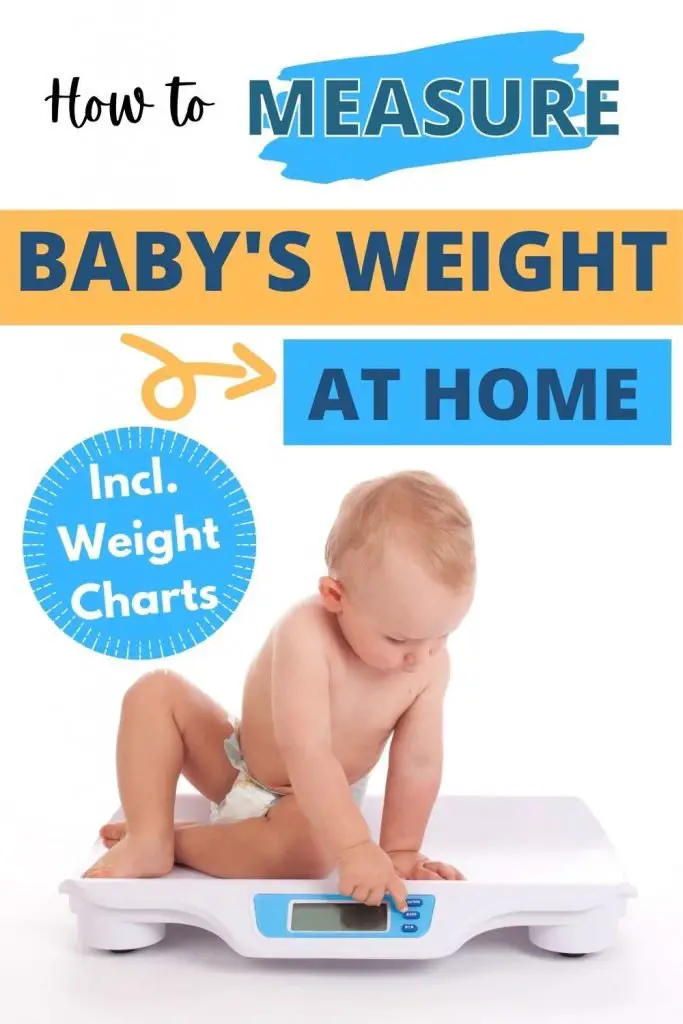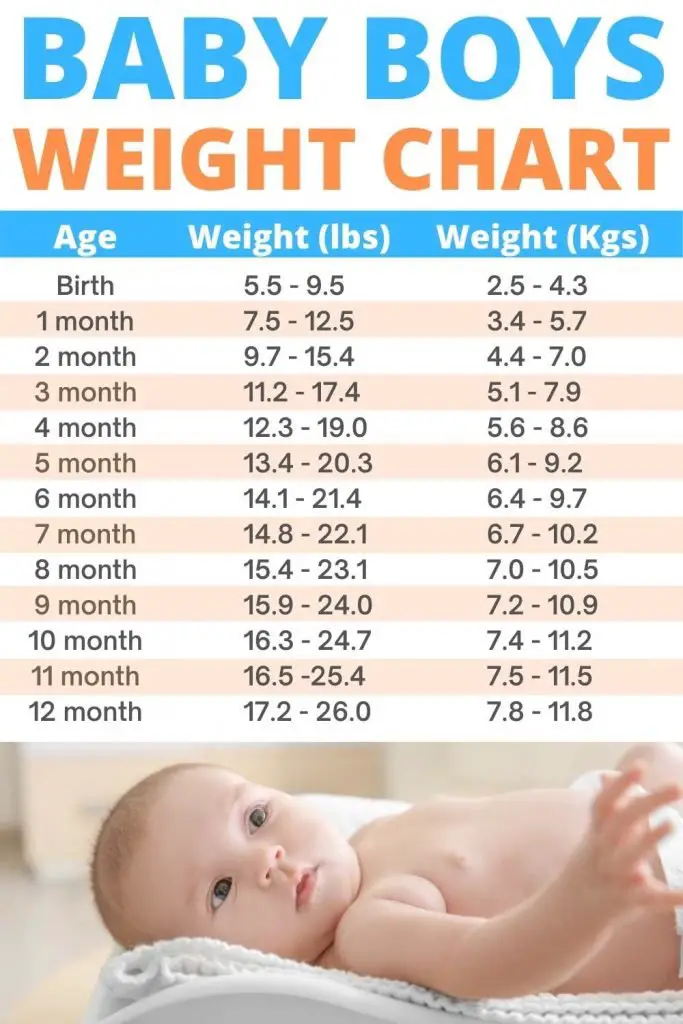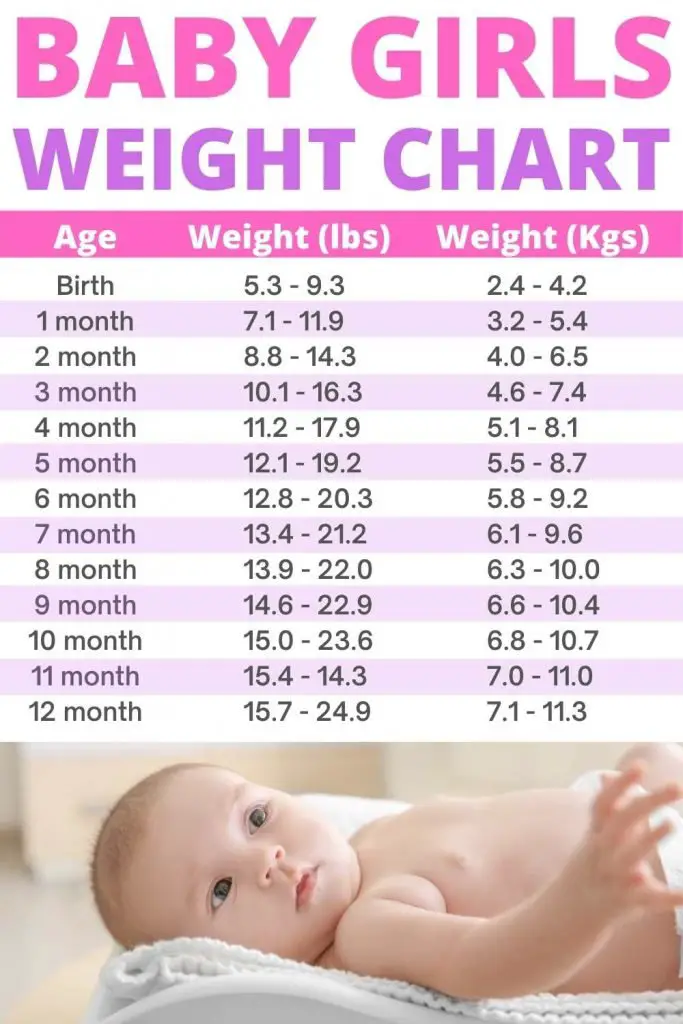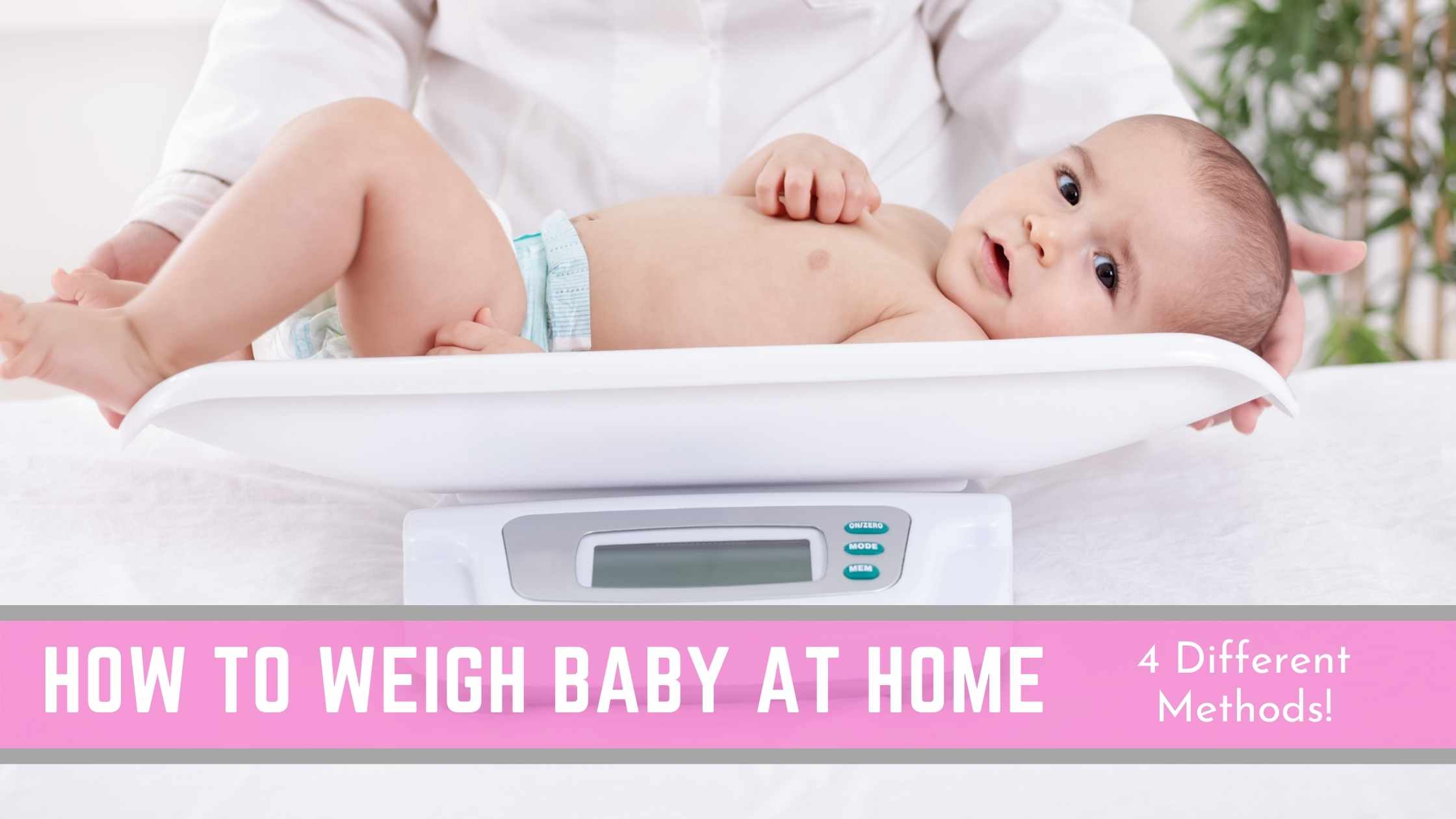In the first months with your newborn, one natural concern is your baby’s weight and how you make sure your newborn is feeding enough and to help make sure you have the right basic data, you should accurately weigh your baby at home.
When, as a new mom, I was breastfeeding my daughter, I was constantly preoccupied she was not feeding enough and gaining weight. This can happen particularly at the beginning, when you are still waiting for the milk to come through (it took me 6 days!) and it’s normal for newborns to lose some weight.
How To Weigh Baby At Home
Whoever is following you and your baby postpartum (a midwife and then a nurse in my case), will be responsible for weighing your baby every so often, to make sure they are on track with gaining weight. However, if you don’t want to stress and wait for the next appointment, you might want to weigh your baby at home yourself.
The pandemic could also be affecting your postpartum plan, and you might be stuck with online reviews from medical professionals. Meaning you have no choice but to measure your baby’s weight yourself.
There’s different methods that you can use, some more accurate than others. Here’s all the information you need on how to measure baby’s weight at home, why and how often you should do it, and what actions you should take if you are worried about your baby losing weight.
Related:

Why it’s Important to Track your Baby’s Weight
Tracking your baby’s weight is important to determine the rate at which they are growing. This will allow you to understand if your child (particularly at a newborn stage) is developing and growing at a steady and normal pace or if there are any underlying health issues or problems with your milk supply (if you are breastfeeding).
A sudden or steady drop in weight, for example, could alert you that something is not quite right and will prompt you to talk to a medical professional, so they can check if there are any health issues that need to be investigated. Or it could indicate that you are experiencing a drop in milk supply and you can start taking actions to fix that.
Related:
Weighted Feedings
Another reason why some parents decide to weigh their babies is to check whether or not they are feeding properly and baby is taking in enough milk. This is a cause of concern particularly for breastfeeding mothers, as there is no exact way to understand how much breastmilk baby is feeding unless they are weighed before and after each feed.
This technique is called Weighted Feedings and is sometimes recommended to new moms by medical professionals. That said, there’s a bit of controversy as to whether the method is accurate or not.
I personally never did weighted feeds, even though my mom (who did so with me back in the day) kept insisting that I should be doing it! My midwife didn’t think it was necessary and explained that tracking the weight (and wet diapers!) over the course of a few days is a better indicator on whether my baby was feeding enough or not.
Plus, I thought weighing my baby before and after every feed and stressing over how much milk I was producing was going to drive me mad. I decided to take some deep breaths and be patient only weighing my baby a maximum of once every couple of days.
However, there are some breastfeeding mothers that simply have a desire to understand exactly how much breastmilk their baby is taking at every feed, and don’t stress about it. Or others moms that are experiencing some issues and do need to know exactly how much they are feeding their baby, and weighted feeds are the only way to know. If that’s your case, then go for it!
According to Candace J. Roper, a birth doula and certified breastfeeding specialists, weighted feeds can give important information and help troubleshoot problems:
They can tell you if baby is transferring milk well, or not. A breast pump is not a reliable indicator of milk supply, baby may transfer more milk than a pump, and a weighted feed would help figure that out. I would not recommend weighing every feed, but as a means of gathering information to help solve a puzzle it can be very useful.
How Often Should You Weigh Your Baby?
According to babycenter and the NHS website, your baby should be weighed at birth and frequently during the first two weeks of life. After that, your child’s weight should be checked:
- no more than once a month up to 6 months of age
- no more than once every 2 months from 6 to 12 months of age
- no more than once every 3 months over the age of 1
Your baby will usually only be weighed more often than this if you ask for it or if there are concerns about their health or growth.
I live in New Zealand and here a midwife comes to your house every couple of days within the first 2 weeks, then visits slowly decrease in frequency up to 6 weeks. After that, you are transferred back to your family doctor, and you can have government funded check ups with a nurse every month or so up to 6 moths of age, and then … I can’t remember to be honest 🙂 By that stage my daughter had already started solids and her losing weight was never a worry!
If you want to weigh baby yourself at home, I would recommend to stick with the NHS recommendations as much as possible, and only weigh more often if there are causes of concerns. That’s after you’ve spoken to a doctor about your concerns as well of course!
Weighing your baby more often than that might cause unnecessary worry, as the results you get might make it seem as if your baby hasn’t gained much weight even if he has. Waiting for a few weeks will give you a much better picture. And, trust me, you really want to avoid this extra stress with a newborn!
Measuring Your Child’s Weight At Home
There are different methods that you can use to measure your baby’s weight at home. You can use a normal kitchen or bathroom scale, a luggage scale or use more specific digital baby scales. However, some methods are definitely more accurate than others, and I will go through all of them in detail below.
I suggest that you weigh baby in a freshly changed disposable diaper, at roughly the same time of the day every day. For example, every few mornings after a feed and a diaper change. If you are using cloth diapers, then weigh your baby naked, as these tend to weigh more than disposable diapers.

1) How To Weigh Your Baby On A Kitchen Scale
A kitchen scale is usually something that everyone has at home, and it’s definitely a type of scale that you can use to weigh your baby if you have to and are on a budget. If you don’t have one, it might be a good investment for both your baby and your kitchen!
Make sure it’s a digital scale though, as I don’t think you’d get a very accurate reading with an analog one. And consider the following:
- Capacity: this can vary a lot from scale to scale. You don’t want to buy a kitchen scale that has a very low capacity and you can only used for the first couple of days. Buy one that’s got a capacity of at least 11 pounds (5 Kg).
- Accuracy: most kitchen scales are extremely accurate down to the ounce. However, some kitchen scales can even weigh in 0.05-ounce (1 gram) increments. I would recommend buying a very accurate kitchen scale, particularly if you are planning on using it for weighted feeds.
Bear in mind though, you won’t be able to use a kitchen scale to weigh your baby at home for too long. Kitchen scales are only useful in the first couple of months with a newborn (give or take depending on how big your baby is) but, after that, you’ll need to upgrade to a scale that can handle bigger weights (and more movement)!
To use a kitchen scale at home to weigh your baby, place a large bowl or baking sheet on the scale and place a light sheet or towel over the surface. Once that’s done, you’ll need to press the tare button to zero the scale. Then, carefully place your newborn on the surface and take the measurement.
Related: Baby on a Budget – Top Tips on How to Save Money with a New Baby
Pros:
- Can be very accurate
- Almost everyone already has a kitchen scale at home that they can use
- Affordable
Cons:
- Can only be used when baby is little due to their limited capacity
- If you have a very wriggly child, you need to be very careful that your baby doesn’t move too much. Always keep your hands close when weighing your baby on a kitchen scale!
There are plenty of kitchen scales that are rated up to 22 pounds (10 Kg) and you can fit any bowl you want on top.
2) Weighing Your Child On Bathroom Scales
Measuring your baby’s weight on a bathroom (or standard household) scale is something I have done many times, particularly when my children started getting a bit older and it gets too long between doctor’s appointments to find out. The main reason I usually weigh them on a bathroom scale is to find out how much pain killer I can give them when they are sick!
The beauty of this method is that, again, almost everyone has a bathroom scale. Plus bathroom scales have a much greater capacity than kitchen scales, so you can keep using it no matter your child’s age.
The only downside is that most of them do not break weight down to the ounce, so you would not be getting an extremely accurate measurement. This could be a problem if you are planning on doing weighted feeds and need very accurate readings. If that’s the case I would recommend using a kitchen scale instead. Otherwise, I think it can still be accurate enough for a once off measurement or to track progress over a few days!
Typically, they’ll have an accuracy of 3.5 ounces (0.1 Kg) and comes with a very cheap price tag.
To weight a baby at home with a bathroom scale:
- Weigh yourself first.
- Weigh yourself again, but with your baby in your arms. Make sure your baby is naked when doing this.
- Subtract your weigh from the weigh of you and your baby combined: that’s how much baby weighs.
Be mindful of the fact that analog scales are not as accurate as digital scales. And I find them harder to read. So, I would really recommend using a digital scale over an analog one.
Pros:
- Almost everyone already has a bathroom scale at home that they can use
- Affordable
- No limited capacity: it can be used no matter your child’s size or age
Cons:
- Not as accurate as most kitchen scales as they don’t usually weigh down to the ounce
- Not recommended for weighted feeds
3) Using A Digital Baby Scale
Another option for weighing baby at home is to use a digital baby scale. These are specifically designed to measure the weight (and sometimes the length too) of a baby and are shaped so that’s both easy and safe to lie your baby on them to take the measurements.
If you’ve already been to a pediatrician appointment, or if your midwife has been to your home to measure baby, you’ve most likely seen one of these before.
I don’t personally think it’s necessary to buy one of these: a kitchen scale in the early days and / or a bathroom scale when baby gets a bit older are more than enough. Unless you are planning on doing weighted feeds: then I would consider buying one of these. It would make measuring your baby’s weight so much easier, plus you can be sure to get very accurate readings every time.
It could also be a good investment if you are planning on having multiple kids. They are not THAT expensive, and could even be a good addition to your Registry!
Pros
- Very accurate
- Designed to get accurate measurements even when the child moves around a lot
- Some of them can be converted to toddler or adult scales, so it becomes a long term investment
Cons
- More expensive than a standard kitchen or household scale
- Unless you buy one that converts to a toddler or adult scale, you can only use them for a very limited time
There is a great selection of digital baby scales on the market. Most of them are between $40-70, convert to toddler or adult scales and can also be used to weigh your pets or as kitchen scales.
4) How To Weigh Your Child With A Sling And A Luggage Scale or Fish Scale
Last but not least, a super handy and easy method to weigh a baby at home is to use a sling with a luggage or fish scale. This is what my midwife actually used with our second daughter, and what many caregivers have started recommending for mothers at home since the pandemic started and face-to-face visits are not an option anymore.
Luggage and fish scales (also called travel scales) are essentially the same thing: it’s a portable scale with a hook or strap to weigh any type of luggage (or fish!). There are many different options to choose from if you are considering buying one, and they are all relatively cheap: you can get one for around $20, if not less. I would make sure to buy one with a hook instead of a strap though, as it makes it easier to hang a sling on it.
For the sling, you can use an actual [baby carrier / sling if you already have one at home, or you can make one by knotting together two corners of an infant blanket. If the scale doesn’t allow you to tare out the weight of the sling, then write down the weight of the sling before putting the baby on the scale. After that, subtract this number from the weight of the baby in the sling to get baby’s weight.
Try and always use exactly the same sling or blanket for more accurate results.
Pros:
- Very affordable
- Accurate
Cons:
- Can only be used when baby is little due to their limited capacity
How Much Weight Should Babies Gain Each Week?
Many moms start getting a bit worried when their infant loses weight in the first few days of life and milk seems like it’s taking forever to come. However, remember that it’s normal for babies to lose 7 to 10% of their birth weight, but should regain that weight within the first 2 weeks or so after birth.
After that, most newborns gain weight at a rate of about 1 ounce (30 g) per day. Many newborns also go through a period of rapid growth when they are 7 to 10 days old, and again at 3 and 6 weeks: during this period they may gain more than 1 ounce per day.
Mayo clinic says to expect a baby to gain 5 to 7 ounces a week from birth to 6 months, and 3 to 5 ounces a week from 6 to 12 months.
But remember these are just guidelines! Some babies might gain a bit more or less than that and still be completely healthy. Also, be mindful that breastfed infants typically put on weight more slowly than formula-fed infants in the first year of life, particularly after about 3 months of age.
If you have major concerns about your baby’s growth, it is best to call your pediatrician or family doctor to discuss your concerns.
How Much Should a 2 Month Old Baby Weigh?
Guidance for how much a two month old baby boy normally weighs is a weight range of 9.7-15.4lbs (or 4.4-7.0 Kgs).
Similar guidance for how much a two month old baby girl normally weighs is a weight range of 8.8-14.3lbs (or 4.0-6.5 Kgs).
How Much Should a 3 Month Old Baby Weigh?
Guidance for how much a three month old baby boy normally weighs is a weight range of 11.2-17.4lbs (or 5.1-7.9 Kgs).
Similar guidance for how much a three month old baby girl normally weighs is a weight range of 10.1-16.3lbs (or 4.6-7.4 Kgs).
How Much Should a 4 Month Old Baby Weigh?
Guidance for how much a four month old baby boy normally weighs is a weight range of 12.3-19.0lbs (or 5.6-8.6 Kgs).
Similar guidance for how much a four month old baby girl normally weighs is a weight range of 11.2-17.9lbs (or 5.1-8.1 Kgs).
Track Your Baby’s Weight Gain With Growth Charts
Here’s two weight charts for both boys and girls for guidance in the first year of life.


Once you know your baby’s weight, you can compare their measurements to other babies with a percentile chart (or growth chart). There are even websites or apps that offer the ability for you to input your baby’s weight and length and track their progress.
These charts show the pattern of growth healthy children usually follow. Boys and girls have different charts because boys tend to be a little heavier and taller, and their growth pattern is slightly different.
Remember that the aim is not for your child to be in the 50th percentile 🙂 I used to be a bit upset that my first baby was always in the 90th percentile for weight – it made me think she was too big for her age! When, in reality, she was perfectly healthy and growing at a perfect pace.
And be mindful of the fact that some growth charts were developed taking into consideration only breastfed babies (who gain weight slower), or only formula-fed babies (or a mix of both). So, depending on the feeding method you are using, your baby might look like he’s gaining more or less weight than the average child. DO NOT WORRY TOO MUCH ABOUT IT!
You can download some growth charts from the World Health Organization (WHO) for either boys or girls here.
What If My Baby Is Losing Weight?
If your baby has lost more than 10% of their body weight in the first two weeks of life, of if they are older and suddenly losing weight, it’s important that you talk to your pediatrician or health care provider.
However, if your baby is just losing a bit of weight or if they don’t look like they are putting on as much weight as other babies the same age, just keep tracking your baby’s weight and keep an eye on these signs that your baby is getting enough to eat:
- Baby is active and alert
- Baby is satisfied after feeding
- You are getting plenty of wet and dirty diapers
If you think you are experiencing a sudden drop in milk supply, head to this article to find out what to do: Sudden Drop in Milk Supply (Signs, Causes and What to do to increase it again)
Summary
In conclusion, measuring your baby’s weight at home is something that can be done very easily and without spending a heck of a lot of money! You can choose between these different methods:
- Kitchen Scale
- Bathroom or Household Scale
- Digital Baby Scale
- Luggage or Fish Scale
The first two are probably the easiest, as most people already have one at home, whereas the other two usually require some sort of investment. Digital baby scales are the most expensive ones, but I would recommend getting one of these if doing weighted feeds as they are the easiest to use and they provide the most accurate readings.
If you are pregnant and are planning on weighing your baby at home, then definitely add one of the above scales to your Newborn Baby Checklist.
If you are bottle feeding, also check out these related articles full of tips to make mom’s life easier:
- Paced Bottle Feeding: Benefits and Tips on How to do it right
- 25 Formula Feeding Tips to Make Bottle Feeding a Breeze
If you are breastfeeding, here’s some tips and information to survive the first few months after birth:
- 20+ Best Online Breastfeeding Courses of 2021 (FREE Classes too!)
- Sore Nipples While Breastfeeding?! 15 Tips that Saved Me!
- 14 Drinks that Increase Milk Supply
Did you find this useful? Pin It!




Appreciate the thorough and specific post! Thanks for the tips!
Great tips for new mamas! I actually drove to the pediatricians office every other day with my preemies, so these all would have been a better (and less stressful) solutions back in the day. 🙂
Thanks Jericka, absolutely – you nailed it! Would save so much time to be able to weigh your baby at home instead of driving to the pediatrician every time 🙂
Very helpful article. I usually do the bathroom scale. My battery died and I need to get a new one to see how much she weighs. This reminded me to!
Thanks Nicole 🙂 that would be a great tip – always make sure you have some spare batteries around the house lol
I love how detailed this post is! Definitely would have saved this last May when I had my baby boy. I was so worried he wasn’t gaining enough weight as a preemie.
Thanks Sarah!
I am definitely saving this detailed post on how to weigh babies at home in case our family expands. As someone who drove all the way to my lactation consultant’s office to do weighted feedings, this would have helped me a lot